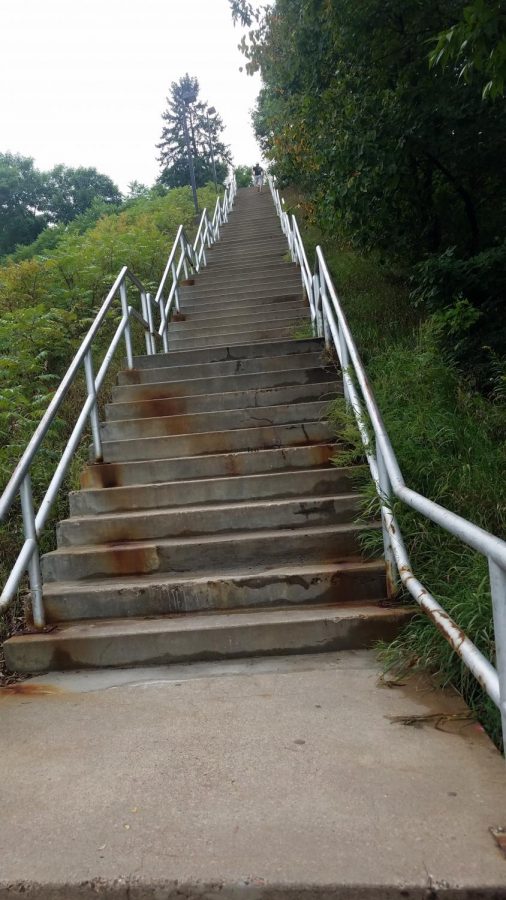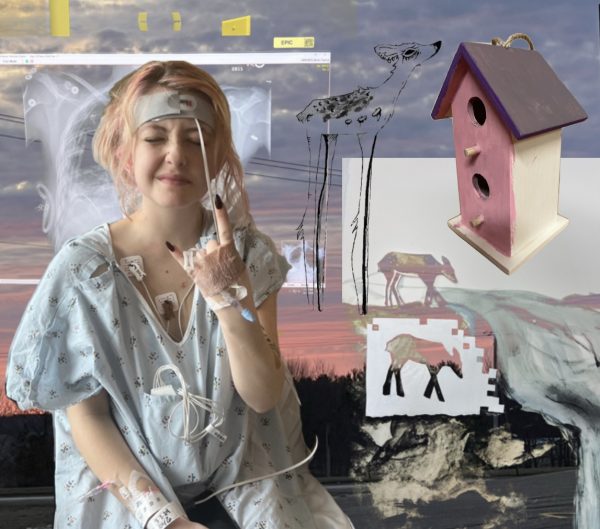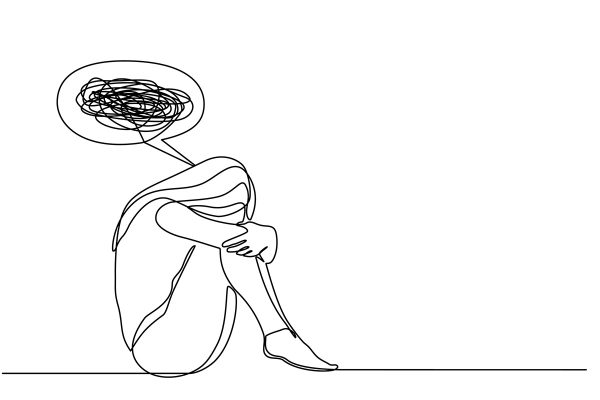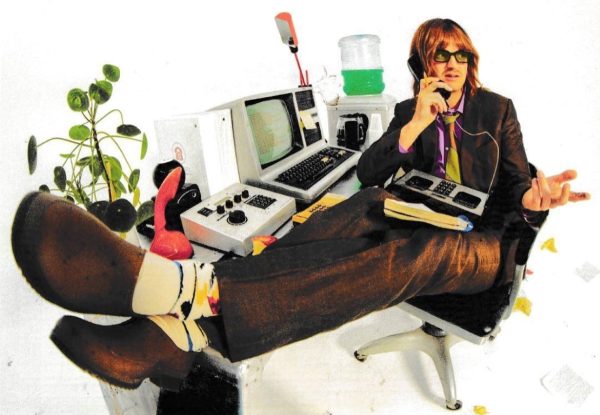Overcoming chronic pain
My journey with accessibility and invisible illness
Photo by Bridget Kelley
The stairs between the hill and Horan Hall are another exhaustingly great way to stay in shape.
I have been living with chronic pain for about two and a half years. I have been to more than a dozen doctors, physical therapists, specialists and the like. Amongst my diagnoses are paradoxical vocal fold motion disorder and Ehlers-Danlos syndrome, which are the two largest perpetrators in making my life more difficult — but not unmanageable.
Ehlers-Danlos syndrome is actually an umbrella of any of thirteen syndromes. The type of EDS that my symptoms are most consistent with is known as hypermobile Ehlers Danlos syndrome.
The most prevalent symptom of hEDS is having what my doctor described as “slippery joints,” meaning that I experience a lot of dislocations and subluxations, or partial dislocations. These happen sometimes without much warning. I have dislocated my knee from stepping off a curb too quickly, and, while writing this, I subluxated a rib because I sneezed.
Sometimes my ribs, much like a group of caffeinated third-graders, have a hard time sitting still. This constant shuffling of my much-too-small ribcage results in intense chest pains. It’s not serious — several ER doctors have assured me that I am not, in fact, having a heart attack at the age of 19. What is happening is a combination of my hEDS and breathing issues, causing my brain to tell me that something has gone wrong — the only way it really knows how to tell me is by causing me a lot of pain.
It’d be so much easier if my brain could just talk to me and be like, “Hey girl, your PVFMD is making it hard for you to breathe so your lungs are working four times as hard which is making your ribs move around.”
PVFMD is essentially my vocal cords not working the way that they’re supposed to. Instead of opening when I breathe in, they close, causing an obstruction of my airway. This becomes more of a problem for me when my breathing is elevated, when it’s humid or cold out, when someone is smoking or vaping near me or even when someone is wearing certain perfume.
Along with using inhalers and nebulizers, I spent a good amount of high school in meeting with speech therapists who had me run stairs and hills and on treadmills and learn breathing techniques to try to get my lungs and vocal folds to work with my brain.
Now, I try to focus on my breathing and avoid things that make my symptoms worse – I avoid people when they’re smoking or vaping, and I stay in on particularly humid days if possible. I also try to avoid stairs and walking too much, so as to not anger any of my joints and I avoid eating gluten due to its inflammatory properties that sometimes make it pretty hard for me to walk if I overdo it.
Despite all my careful planning, I still have difficulties. Sometimes I’ll hear someone scoff at me for taking the elevator to the second floor, but a stairwell with hundreds of other students pushing and rushing and wearing all types of scents in a contained space is essentially my worst nightmare. Well, that and waking up covered in spiders. I digress.
Accessibility isn’t just for those whose ailments you can see. Some people, like me, are living with invisible illnesses. Looking at me, one wouldn’t be able to tell that I experience chronic pain or that I have a laundry list of diagnoses. And that’s okay. I’m willing explain why I do the things I do to make my life easier, but I don’t think I should have to.
Kelley can be reached at [email protected].

Bridget Kelley is a fourth-year journalism student. Bridget enjoys hanging out with babies, coffee and oxford commas. If anyone has any gluten-free food suggestions, Bridget's inbox is open.










